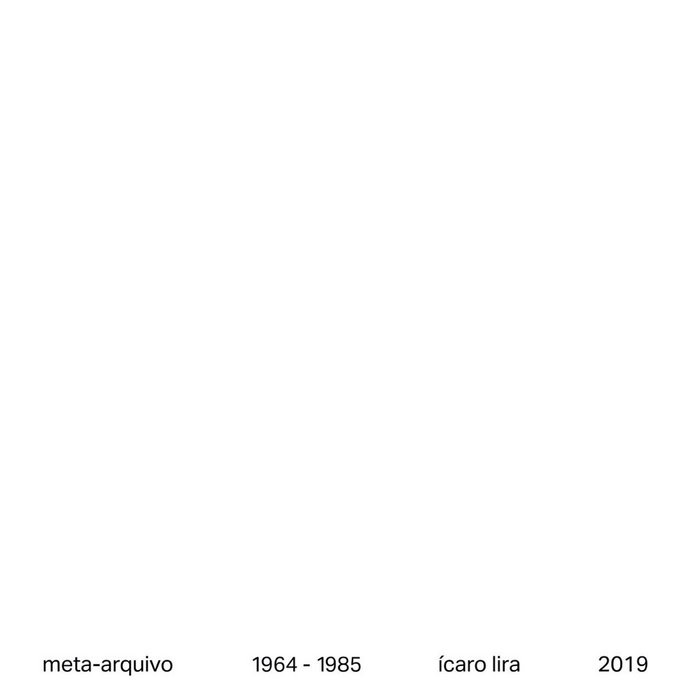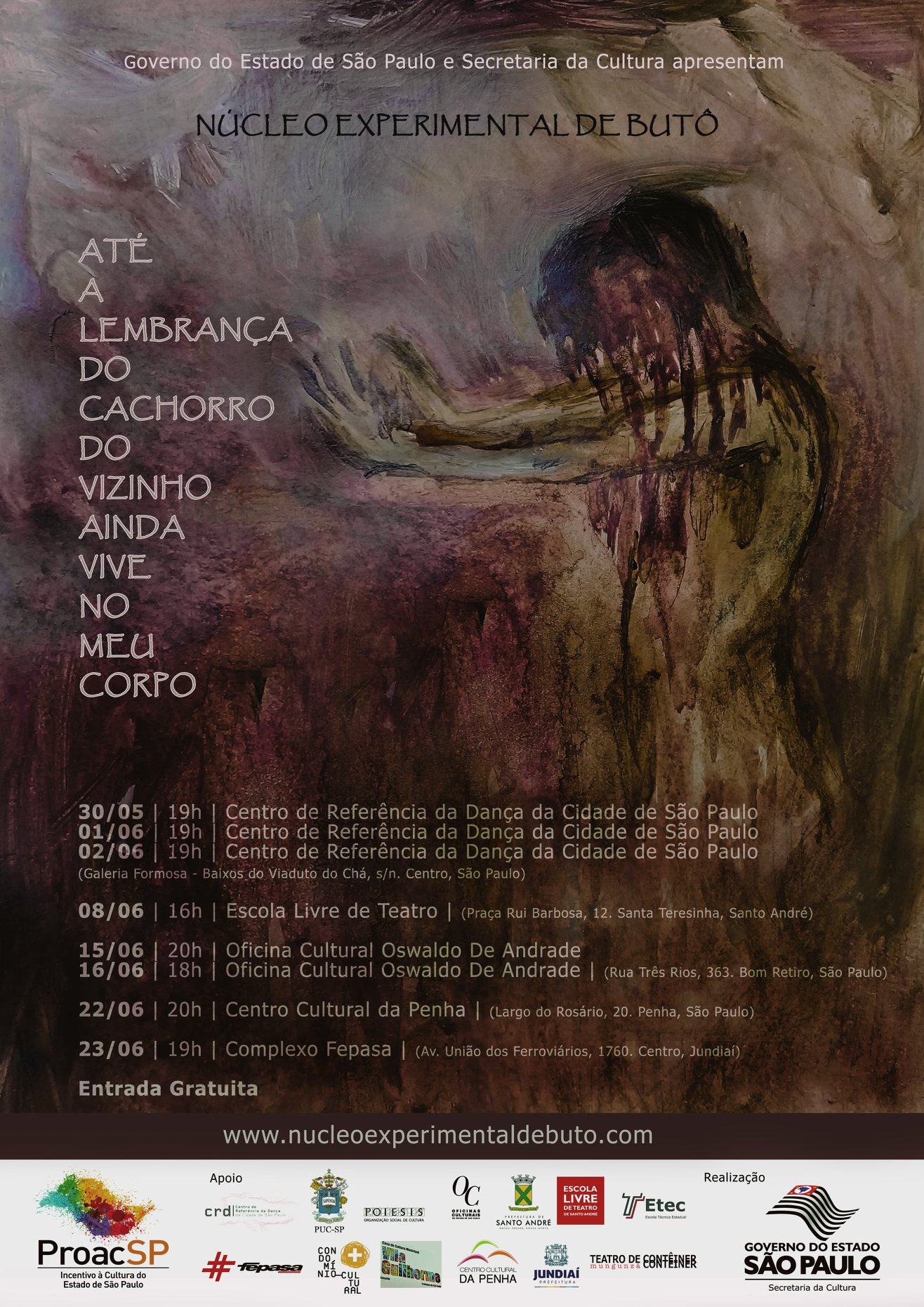09.10.2019
Composition and mix done for the work 1964-1985 by Visual Artist Ícaro Lira. Presented at Sesc Belenzinho in the exhibition meta-arquivo.
COISAS QUE MATAM presents the EP ''1964-1985'' by Ícaro Lira on cassette and digital streaming. Commissioned work for the exhibition Meta-Arquivo: 1964-1985. Reading and hearing space of dictatorship stories.
Master by Beatmasters- Audio Innovations
COISAS QUE MATAM presents the EP ''1964-1985'' by Ícaro Lira on cassette and digital streaming. Commissioned work for the exhibition Meta-Arquivo: 1964-1985. Reading and hearing space of dictatorship stories.
Master by Beatmasters- Audio Innovations

05.06.2018
Directing and Dramaturgy: Thiago Abel
Corporal Preparation: Juliana Pedroso
Cast: Igor Costa, Juliana Pedroso, Nubia Abe, Padu Cecconello, Sofia Scharff, Thiago Abel
Provocation: Mônica Cristina Bernardes e Rodrigo Putarov
Graphic Art: Núbia Abe
Costume: Padu Cecconello
Lighting Design: Juliana Morimoto e Mônica Cristina Bernardes
Sound design: Stefanie Egedy
Synopsis: Inspired by ''Kaze Daruma'' last speech of Tatsumi Hijikata - founder of Ankoku Butō -, six bodies explore the main poetic matrices present in this manifest text; mud, contagion, memory of the flash, the dead and death. The show it's focused to what they have in common: the earth, uterus-tomb that devours the bodies, becoming the reservoir of their memories and then dispose them as nutrients that will generate other bodies. Memories never lost, but in a constant process of transmutation of elements, which either combine and thicken, either dilute and silence, but never disappear.
The research investigated the landscapes and ethical propositions of the text, from which emerged sensations, actions and beings that were structured and provoked each other: the encounter of those forces and their paths in the body result in the present work that oscillates between the constant metamorphosis and the will of existing while flesh.

From 2015 to 2016 Stefanie was the sound designer of the PAY PICANHA AFTER YOGA.
Since 2015, PAY integrates dance and performance languages into a research that also uses visual arts such as video and photography.